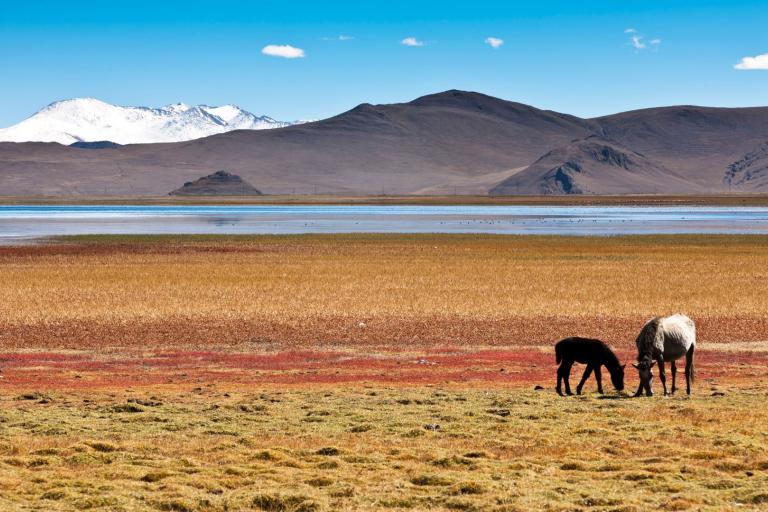Third Pole Climate Forum issues first ever seasonal outlook

The inaugural session of the Third Pole Climate Forum (TPCF), the first ever regional climate forum for a high mountain region, took place in China in early June and issued the first ever seasonal outlook for the summer season June to September 2024, which can help guide decision making and fill knowledge gaps.
Above normal temperatures are likely over most of the region, according to the forecast issued by experts at the session. Precipitation is likely to be near or above normal over most parts of the Third Pole region, although below normal in the western and southeastern parts.
The Third Pole is home to some of the biggest water towers in the world, feeding river basins which supply freshwater to hundreds of millions of people. Rapid changes in the cryosphere and the melting of the glaciers therefore have a major impact on both the high-mountain ecosystems and downstream regions.
In addition to an increase in hazards such as floods, landslides and glacial lake outbursts, glacier melt threatens the sustainability of agriculture and hydropower generation in the region.
“Given the transboundary nature of climate threats in the region, coupled with inadequate infrastructure, limited data, financial and human resources capacity in many of the Third Pole countries, a stronger regional collaboration and knowledge exchange is required,” says WMO Scientific Officer Anahit Hovsepyan.
To facilitate collaboration and address the unique requirements of the Third Pole region, the National Meteorological and Hydrological Services (NMHSs) in the region have jointly decided to establish the Third Pole Regional climate Centre Network (TPRCC-Network) which launched its demonstration phase and initiated the first session of TPCF, co-organized by Beijing Climate Centre and WMO on 4-6 June 2024 in Lijiang, China. Around 70 experts attended from 18 countries, including China, India and Pakistan playing lead roles in the TPRCC-Network.
The TPCF reviewed the state of climate over the region during the past winter and prepared an outlook for the upcoming summer season, consolidating information from multiple sources, and issued a joint statement with key highlights.
Climate in winter 2023/2024 (December, January, February)
- Most of the Third Pole core region experienced higher surface air temperature, except for the inner and southeastern Qinghai-Tibet Plateau. The western Tianshan (Tien Shan) mountains and the southwestern part of the TP region experienced significantly drier conditions than normal, while northeastern and central parts of the TP region experienced wetter conditions. The extent of snow cover was slightly below normal over the region as a whole.
- During December 2023–April 2024, Mongolia experienced the harshest Dzud in the last 50 years. Pakistan and Afghanistan were severely affected by heavy rain and flash floods in April and May 2024. Northern Kazakhstan suffered from floods caused by the exceptional snow melt in March–April 2024.
Seasonal outlook for June-September 2024
- Surface air temperatures are likely to be above normal over most parts of the region, especially over the Karakoram. The southwestern and northwestern parts are likely to experience normal to above normal surface air temperatures.
- Precipitation is likely to be near or above the climatological normal over most parts of the TP region, however, it is likely to be below normal in the western and southeastern parts of the TP region.


Third Pole Regional Climate Centre Network
The forum launched the demonstration phase of the Third Pole Regional Climate Centre Network (TPRCC-Network) aiming to provide regional and subregional climate and cryosphere related products and services.
The TPRCC-Network Comprises three geographical nodes, with thematic responsibilities for mandatory functions for entire region:
- Northern node - Climate Monitoring China (lead)
- Southern node - Climate Data Services India (lead)
- Western node - Long-Range Forecasting Pakistan (lead)
ICIMOD, TPE, GCW, GEWEX – contributing partners
Overall coordination by the China Meteorological Administration
More information about TPCF1 is available on the TPRCC-Network website: Third Pole Regional Climate Centre Network (TPRCC-Network) (rccra2.org)
Full Consensus Statement is available here: TPCF1-Consensus-Statement_en.pdf (rccra2.org)










